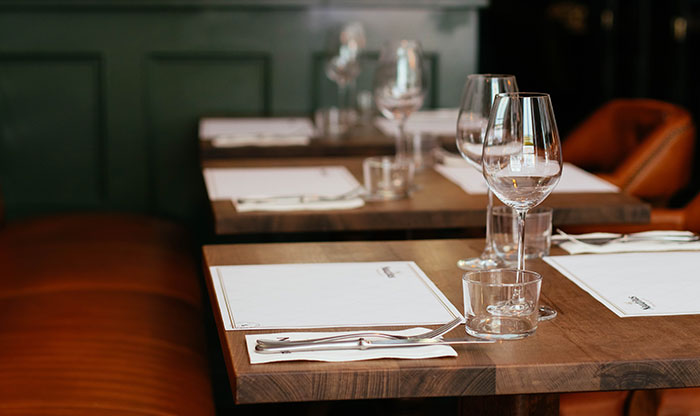Restaurant Safety: Some Ways to Reduce the Risk of Slips and Trips
Restaurant employees slip and fall on the job frequently for a number of reasons, but no matter the cause, it's a risk managers shouldn't be willing to take. Minimum harm could include embarrassment, but maximum damage can result in fatal injury. The restaurant industry employs over 11.6 million people in the United States and remains one of the top verticals when it comes to youth employee injuries, according to The Occupational Safety and Health Administration. Here are some measures restaurants can take to minimize the risk of slips and falls.
Restaurant Safety Shoes
For starters, managers should either provide or mandate appropriate nonslip footwear for staff as part of their restaurant safety shoe program, suggested the National Restaurant Association. As the entire walking path of a dining establishment can become slippery or unstable.
What's more, the shoes should be durable enough to withstand broken glass and other fragmented items that could be waiting around the corner. Hot liquid could slide off of a food plate and onto the server's feet – causing burns. Even the dish itself could injure the foot if it's not protected properly.
In addition to spills, employees may have to navigate blind spots, awkward seating arrangements and a number of other challenging spaces around the restaurant. Some may even work at larger establishments or in places that have multiple floors. In order to improve traction under these circumstances, restaurant staff should consider investing in a pair of skid-resistant shoes that can improve traction. When it's peak dinner hours, the servers are more likely to be running around trying to take care of everyone rather than walking. But it's not just their responsibility to prevent slips from happening.
Cover the Floors
The restaurant management team should focus on purchasing slip-resistant mats for the floors, suggested the NRA. They should be placed behind the bar, in the kitchen and around other parts of the restaurant that frequently come in contact with food and drink. Every night, plenty of drinks, fruit and ice spill behind the bar. Employees can slip on these items and get hurt when a bar mat isn't in place.
Once the mats are in place, the restaurant should also work to minimize grease and slippery spots in other parts of the building. If a spill occurs, it should never be left unattended, cautioned the NRA. Another employee or even a guest if no one else is around should wait by the spill until someone returns with a caution sign or a mop to prevent someone else from slipping and falling. If oil spills it's more difficult to mop up because of its texture and should be covered in salt to increase traction. There are cleaning solutions, floor tape and mats that are designed specifically for spills.
Exercise Vigilance
Products can cut down on the grease that's tough to get off of floors and other surfaces. It's important not to pour just any chemical over the spill because it can actually make the area increasingly slippery, stated the NRA.
Ultimately, it's the restaurant's responsibility to provide employees with a safe working environment, affirmed OSHA. However, employees are still responsible for complying with workplace standards that require slip resistant shoes and taking other measures to minimize risks. If an accident does occur, it's crucial to handle it right away, suggested OSHA. If a person sustains an injury, his or herself should get medical attention. Any injuries should be reported and recorded. Keeping track of problems can help managers avoid them in the future.
Employees and Your Bottom line.
Don't Forget To Share This Post!

6 Essential Leadership Tips for Executive Chefs
Leadership matters in any profession. Here are 6 essential leadership qualities executive chefs should possess to make their kitchens the best they can be.

Restaurant Safety: Some Ways to Reduce the Risk of Slips and Trips
Restaurant employees slip and fall on the job frequently. Here are some measures restaurants can take to minimize the risk of slips and falls.

Your New Food Business: Knowing FDA Regulations
The food industry is full of regulations. Restaurant owners must understand the legalese of food and the importance of being compliant with safety standards.